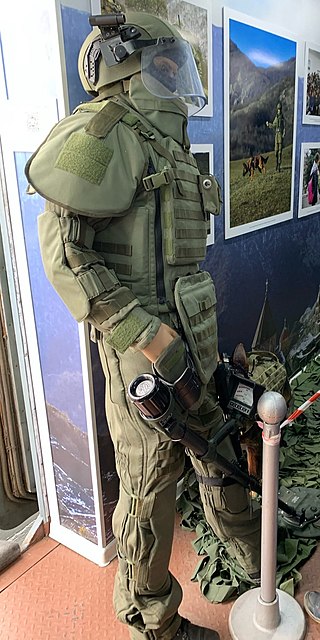
A sapper, also called a combat engineer, is a combatant or soldier who performs a variety of military engineering duties, such as breaching fortifications, demolitions, bridge-building, laying or clearing minefields, preparing field defenses, and road and airfield construction and repair.

The Karakoram Highway is a 1,300 km (810 mi) national highway which extends from Hasan Abdal in the Punjab province of Pakistan to the Khunjerab Pass in Gilgit-Baltistan, where it crosses into China and becomes China National Highway 314. The highway connects the Pakistani provinces of Punjab and Khyber Pakhtunkhwa plus Gilgit-Baltistan with China's Xinjiang Uyghur Autonomous Region. The highway is a popular tourist attraction and is one of the highest paved roads in the world, passing through the Karakoram mountain range, at 36°51′00″N75°25′40″E at maximum elevation of 4,714 m (15,466 ft) near Khunjerab Pass. Due to its high elevation and the difficult conditions under which it was constructed, it is often referred to as the Eighth Wonder of the World. The highway is also a part of the Asian Highway AH4.

The Pakistan Army, commonly known as the Pak Army is the land service branch and the largest component of the Pakistan Armed Forces. The president of Pakistan is the supreme commander of the army. The Chief of Army Staff (COAS), a four-star general, commands the army. The Army was established in August 1947 after Pakistan gained independence from the United Kingdom. According to statistics provided by the International Institute for Strategic Studies (IISS) in 2023, the Pakistan Army has approximately 560,000 active duty personnel, supported by the Pakistan Army Reserve, the National Guard and the Civil Armed Forces. Pakistan Army is the sixth-largest army of the world and the largest of the Muslim world.
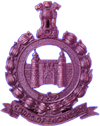
The Indian Army Corps of Engineers is a combat support arm which provides combat engineering support, develops infrastructure for armed forces and other defence organisations and maintains connectivity along the borders, besides helping the civil authorities during natural disasters. College of Military Engineering, Pune (CME) is the premier technical and tactical training institution of the Indian Army Corps of Engineers.

The 25th Indian Infantry Division was an infantry division of the Indian Army during World War II which fought in the Burma Campaign. It was re-raised within the post-independence Indian Army in 1948.

The Bengal Engineer Group (BEG) is a military engineering regiment in the Corps of Engineers of the Indian Army. The unit was originally part of the Bengal Army of the East India Company's Bengal Presidency, and subsequently part of the British Indian Army during the British Raj. The Bengal Sappers are stationed at Roorkee Cantonment in Roorkee, Uttarakhand.

Madras Engineer Group (MEG), informally known as the Madras Sappers, is an engineer group of the Corps of Engineers of the Indian Army. The Madras Sappers draw their origin from the erstwhile Madras Presidency army of the British Raj. This regiment has its HQ in Bengaluru. The Madras Sappers are the oldest of the three groups of the Corps of Engineers.

The Frontier Works Organization ); abbreviated as FWO), is a military engineering organization, and one of the major science and technology commands of the Pakistan Army. Commissioned and established in 1966, the FWO includes active duty officers and civilian scientists and engineers. Since its establishment in 1966, it has been credited with the construction of bridges, roads, tunnels, airfields and dams in Pakistan, on the orders of the civilian government of Pakistan.

The structure of the Pakistan Army is based on two distinct themes: operational and administrative. Operationally the Pakistan Army is divided into nine corps and three corps-level formations with areas of responsibility (AOR) ranging from the mountainous regions of the north to the desert and coastal regions of the south. Administratively it is divided in several regiments. The General Headquarters (GHQ) of the Army is located in Rawalpindi in Punjab province. It is planned to be moved to the capital city of Islamabad nearby.
The 2nd Combat Engineer Regiment (2 CER) is an Australian Army combat engineer regiment located at Gallipoli Barracks in Brisbane, Queensland. It is part of the Australian 7th Brigade, attached to Forces Command (Australia).
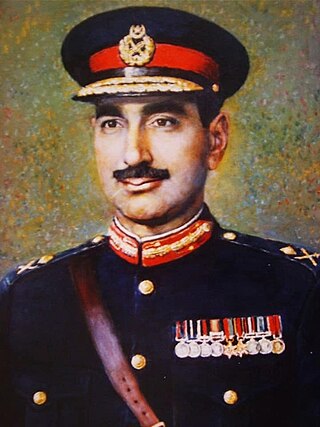
Major General Raja Muhammad Anwar KhanHJ was the first Pakistan Army Engineer Officer and the first Muslim Engineer In Chief of the Pakistan Army. He was the first Muslim to be a Sapper officer in the British Indian Army and its pre-partition Indian Corps of Engineers. His Pakistan Army number was 48 (PA-48).
Lieutenant General Zahid Ali AkbarHI(M), SBt, PE, is a former engineering officer in the Pakistan Army Corps of Engineers, known for his role in Pakistan's acquisition of nuclear weapons, and directing the Engineering Research Laboratories (ERL), a top secret research facility developing the clandestine atom bomb project.
'Engineer-in-Chief or E-in-C', is a Colonel Commandant of the Pakistan Army Corps of Engineers, Frontier Works Organisation and the Military Engineering Services of Pakistan. In the Pakistan Army, the Engineer-in-Chief is a chief engineer and topographer of the Army and currently holds the rank of Lieutenant General, advises the Pakistan Army in matters of science, engineering, and technology.

Western Command is a Command-level formation of the Indian Army. It was formed in 1920. It was disbanded following its demotion to an independent district and eventual merge with Northern Command to form the North-western Army. It was re-raised in 1947 following the transfer of Northern Command HQ to Pakistan. Until 1972, it was responsible for India's border with Pakistan in the North and West and the Chinese border in the North. The Command HQ is in Chandimandir, Haryana, about 5 km east of Chandigarh.
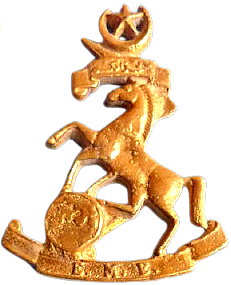
The Pakistan Army Corps of Electrical and Mechanical Engineering is a military administrative and the engineering staff branch of the Pakistan Army.

The Pakistan Army Corps of Signals is a military administrative and a combined arms branch of the Pakistan Army. Headquartered in the Army GHQ, the Corps of Signals oversees the communications, information system, and computer security for the command and control of the joint and combined arms uniformed forces of the Pakistani military.
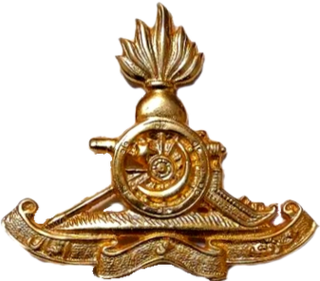
The Regiment of Artillery is the military administrative and combat support branch of the Pakistan Army.

The Commander-in-Chief of the Pakistan Army was the professional head of the Pakistan Army from 1947 to 1972. The C-in-C was directly responsible for commanding the army. It was an administrative position and the appointment holder had main operational command authority over the army.

The School of Engineers is part of the South African Army Engineer Formation, which provides combat engineering corps training and teaching to military officers and personnel as well as other Military Schools throughout the South African National Defence Force. They are currently the only Military School in Southern Africa to formally present IEDD.

The Bristol Engineer Volunteer Corps was a part-time unit of Britain's Royal Engineers, first raised in 1861. It went on to provide the Sappers for the 48th Division of the Territorial Force, serving in both World Wars and postwar until 1967.


















